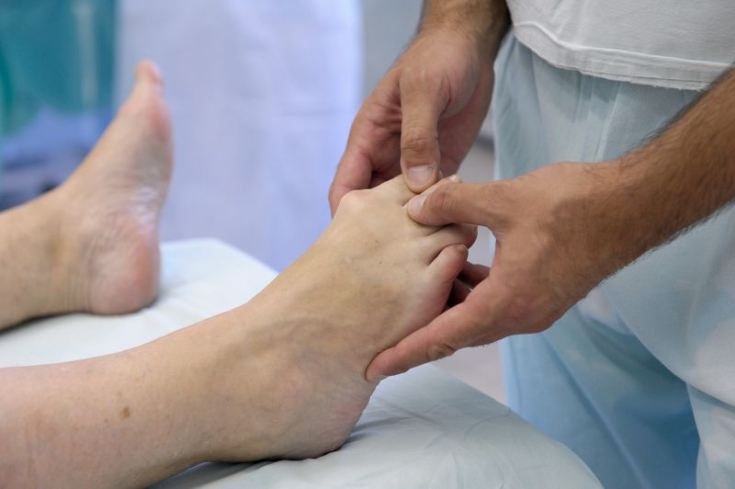The diabetic foot syndrome is one of the most common and severe complications of type 2 diabetes. Despite the fact that in our time there are many approaches to the treatment of this pathological condition, in many cases, limb amputation remains the therapeutic method of choice.
Thus, more than 40% of the total number of limb amputations are performed due to the presence of diabetic foot syndrome. Physicians of all specialties should be alert to the potential risk of developing diabetic foot syndrome in patients with type 2 diabetes.
For more information about the definition and classification of diabetic foot syndrome, as well as the key pathogenetic mechanisms for the development of the neuropathic form of this pathological condition, read on estet-portal.com in this article.
Diabetic foot syndrome: modern definition
According to the definition given by the International Diabetic Foot Working Group, diabetic foot syndrome – is an infection, ulcer and / or destruction of deep tissues associated with neurological disorders and a decrease in the main blood flow in the arteries of the lower extremities of varying severity.
The concept of "diabetic foot" includes acute and chronic ulcers, lesions of the soft tissues, bones and joints of the foot, which occur against the background of diabetes mellitus.
It is worth noting that diabetic foot syndrome can be a complication of diabetes mellitus both of the first and second types, but with the latter variant it is much more common.
Diabetic foot syndrome: what forms of this pathology exist
There are several clinical forms of diabetic foot syndrome.
These include:
1. Neuropathic form of diabetic foot syndrome:
a. trophic ulcer;
b. osteoarthropathy;
2. Ischemic form of diabetic foot syndrome;
3. Mixed form of diabetic foot syndrome.
The relationship between the occurrence of ulcerative-necrotic lesions of the tissues of the foot and ischemia against the background of vascular pathology in diabetes mellitus is obvious. As for the neuropathic form of the diabetic foot syndrome, the pathogenesis of the development of this pathological condition is much more complex.
Follow us on Telegram
Key mechanisms of development of neuropathic form of diabetic foot syndrome
As the name of the pathological condition itself indicates, the basis for the development of the neuropathic form of the diabetic foot syndrome is, in fact, neuropathy.
It is subdivided into:
• autonomic neuropathy;
• motor neuropathy.
The following key mechanisms for the development of the neuropathic form of diabetic foot syndrome should be highlighted:
1. Against the background of autonomic neuropathy, denervation of the sweat glands of the skin of the feet develops, which subsequently leads to the development of distal anhidrosis. Due to a significant decrease in perspiration, the skin becomes dry, prone to trauma and cracking. Violation of the barrier mechanism of skin protection leads to the development of infectious complications, which further initiates the formation of ulcerative-necrotic lesions of the tissues of the foot;
2. Against the background of the development of motor neuropathy, atrophy of the muscles of the feet occurs, which leads to failure of the tendon-muscular apparatus of the foot, followed by its deformation – diabetic osteoarthropathy.
Because human feet are subject to increased pressure, they are constantly subjected to injury in one way or another. In the case of the development of diabetic foot syndrome, dry skin becomes more sensitive to the action of mechanical factors, which leads to the development of hyperkeratosis. Subsequently, autolysis of the soft tissues of the foot occurs with the formation of neuropathic ulcers.

Their secondary infection can lead to such serious consequences as gangrene, phlegmon and osteomyelitis. Nevertheless, the development of these pathological conditions, as well as the diabetic foot itself, can be prevented by the correct integrated approach to the treatment of diabetes mellitus.
Prevention of diabetic foot syndrome consists in providing compensation for diabetes mellitus.
Thank you for staying with estet-portal.com. Read other interesting articles in the "Endocrinology" section. You may also be interested in Factors contributing to the development of diabetic foot.







Add a comment